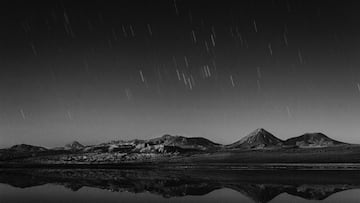Orionid meteor shower: When is the best time to watch the shooting stars this weekend?
One of the most notable meteor showers of the year will take place on 22 October, during which between 15 and 70 meteors per hour will be able to be seen.

Meteor showers are one of the most impressive phenomena in nature. These events, according to NASA (IGN), “occurs when the Earth passes through the trail of debris left by a comet or asteroid.”
Meteors are bits of rocks and ice ejected from comets as they move in their orbits about the sun.
What are meteors?
A meteor can be made from rock or ice and is a piece of debris that separates from a comment or asteroid. A meteor shower is the result of these smaller particles entering the Earth’s atmosphere at high speeds. As they enter, friction, caused by the speed at which they are traveling, forces these objects apart, which is what we see as a meteor shower.
According to NASA, between 26 September and 22 November, there is an increased chance to see meteor showers, and that probability peaks in mid-October. The space agency says that these showers, which can be seen in October, “are considered to be one of the most beautiful showers of the year,” and that the meteors that fall, known as Orionid meteors, “are known for their brightness and for their speed.”
October 22, the date of the 'Orionids'
Much predicting goes into when the Orionids will be seen each year. Since the showers are the result of material from Halley’s Comet, astronomers do have some guidance as they make their forecasts. October 21 and 22 is typically a critical day for showers to be seen.
Look up in the sky tonight! 🤩🌟
— Master Arborist (@MasterArborist) October 21, 2023
During the third week of October, the meteor display spawned by the debris shed by Halley reaches its peak: the Orionid meteor shower!
This year they are scheduled to reach their maximum before sunrise on Sunday morning (Oct. 22). Orion, of… pic.twitter.com/kiNgjgnsDw
Your best chance to see the ‘Orionids’
NASA has provided some helpful advice to those who are hoping to catch a glimpse. This applies to those who live in both hemispheres.
Do not expect that you will be able to see anything immediately; NASA advises that viewers “come prepared with a sleeping bag, blanket, or lawn chair.” You will want to find a place where there is very little light pollution, and it is important to give your eyes time to adjust to the darkness (this can take around thirty minutes). Cities will not be the best locations to see this type of event.
Related stories
Another tip to be able to see the ‘Orionids’ is to select a location that is open. The more open, the better, because it will allow you to see a greater chuck of the night sky.
In addition, wearing warm clothes is advisable. Temperatures can fall at night, and in an open area, any wind can make the outside temperature feel warmer than it is.

